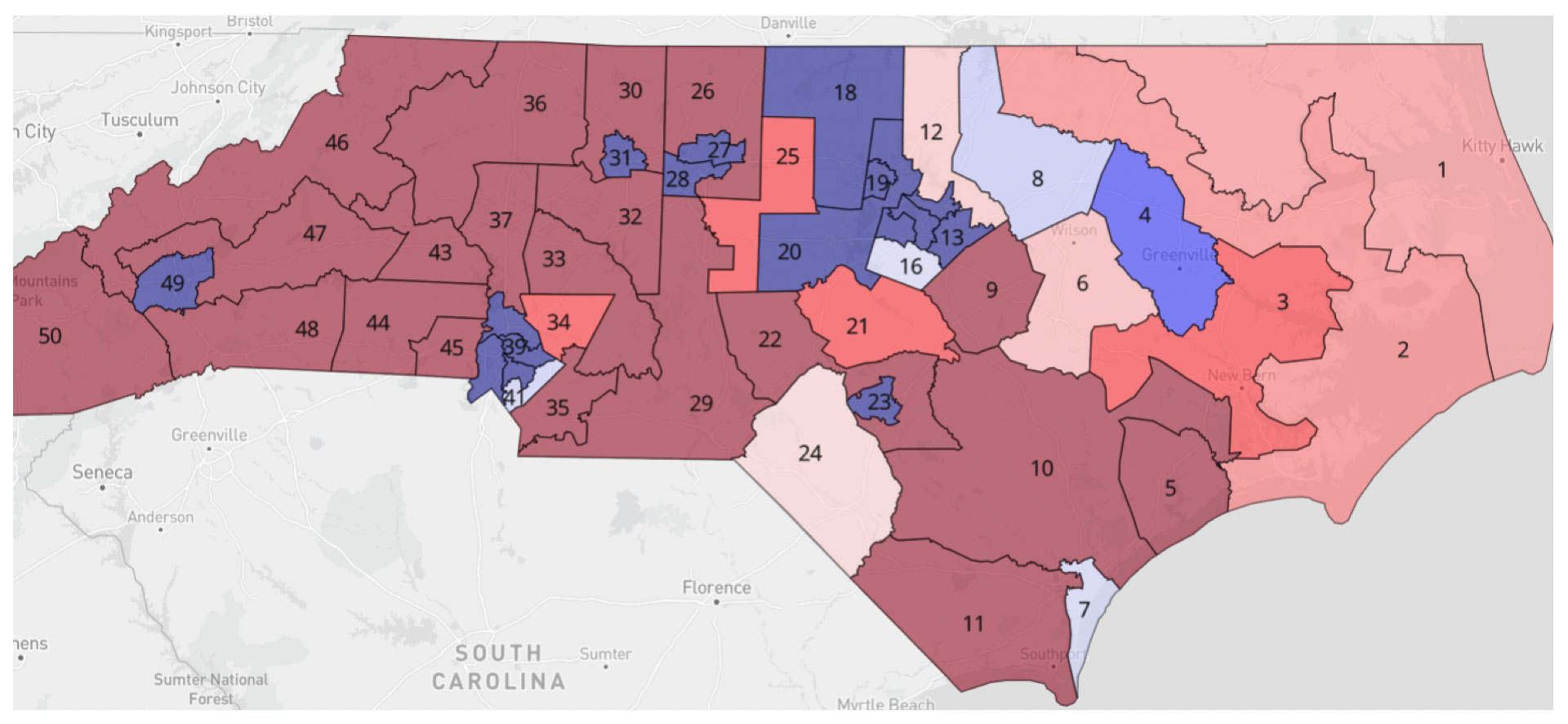Blog Post
DRA Analysis of NCGA 2021 Draft NC Senate Map
In order to further public transparency this redistricting cycle and allow for public review of potential draft maps that will be up for consideration, Common Cause NC has re-drawn the draft NC Senate map drawn by Senator Ralph Hise the week of October 11, 2021 in Dave’s Redistricting Application (DRA). Here is a link to the map, to view the analysis in detail.
This information is provided for public education only, and the analysis here reflects that generated by the DRA program and does not constitute an opinion on or endorsement of this map by Common Cause.
According to the DRA Analysis:
- 24 districts are safe or likely Republican
- 17 districts are safe or likely Democratic
- 9 districts are competitive.
- There are 10 majority-minority districts.
This is a view of the draft Senate map based upon how it would perform if voters voted the same way they did in the 2020 election for President. The darker the shade of red or blue the safer the seat. The lighter the shade, the less safe the seat is:

To measure competitiveness, DRA uses the Democratic vote share. Nine of these districts had a Democratic vote share between 45% and 55%. Out of those, 3 lean Democratic including district 41 (Southeast Mecklenburg), district 16 (Southern Wake), and district 7 which includes Wilmington and Wrightsville Beach. The other 6 lean Republican including district 8 (Vance, Franklin, and Nash), district 12 (Granville, and Northern Wake), district 6 (Wilson, Greene, and Wayne), district 24 (Hoke, Scotland, and Robeson), district 34 (Concord, Kannapolis), and district 1 (Northeast NC).
This view of the draft Senate map is based on composite 2016-2020 election data which combines the results of several elections:

Using the composite data (which according to Dave’s may be a better predictor), district 8 changed to lean democratic, district 2 still trended Republican but fell within the competitive range, and district 34 became slightly less competitive, falling just outside of the 45% – 55% range.
The overwhelming majority of the districts are safe. According to DRA’s analysis, this map would likely produce a 29-21 split in favor of the Republicans. Although, if all the competitive districts went for the Democrats, they could gain a 26-24 majority. If all the competitive districts went for Republicans, they’d have a 33-17 majority in the Senate.
This map shows how the Black population is spread out across the districts:

Eight of the districts have a Black voting age population of 37% or higher. Those are districts 4, 13, 19, 23, 27, 28, 39, and 42. District 39 is the only district with a majority of the voting age population being Black (51.41%).